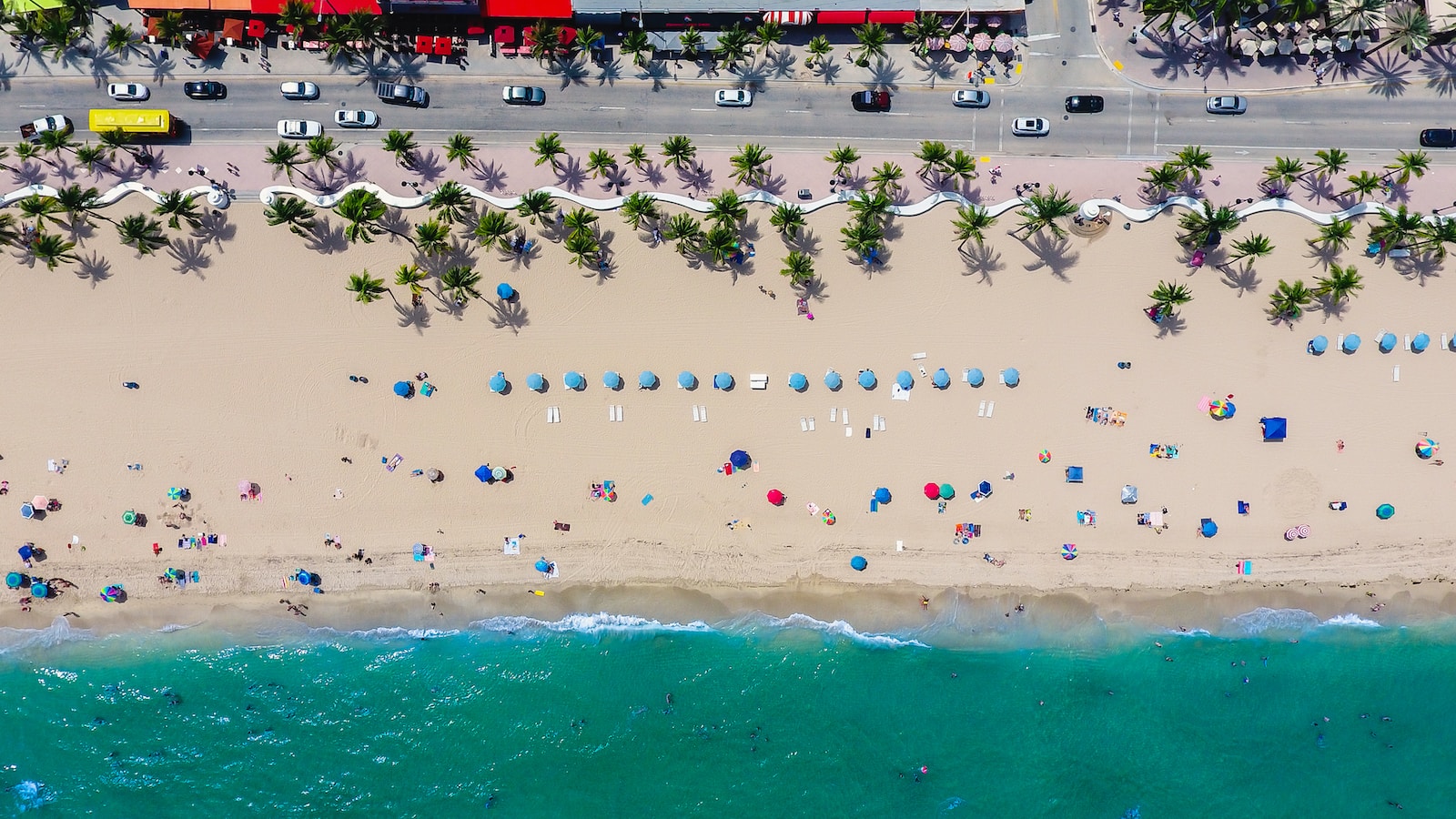Destin Beach is one of the most popular beaches in Florida, known for its crystal-clear waters and pristine white sands.
However, many beachgoers wonder whether Destin Beach has seaweed and how it can affect their beach experience.
Seaweed is a common occurrence on beaches, and it can impact the water quality, marine life, and overall aesthetics of the beach.
Does Destin Beach Have Seaweed?
Like many beaches in Florida, Destin Beach can experience seaweed influxes, especially during certain times of the year or under certain weather conditions.
The amount of seaweed on the beach can vary greatly depending on factors such as tides, winds, currents, and storms.
Destin Beach tends to have more seaweed during summer, especially in July and August, due to warmer water temperatures and increased nutrient levels.
Additionally, seaweed influxes can occur after storms or high winds that stir up the ocean waters and bring seaweed closer to shore.
However, Destin Beach management and local authorities monitor and maintain the beach’s cleanliness, including regular seaweed removal, to ensure visitors enjoy the beach experience.
Beachgoers can check the beach’s daily conditions and seaweed alerts before visiting the beach to stay informed about any current seaweed influxes.
Why is there so much seaweed in Destin?
The amount of seaweed on Destin Beach can vary based on various factors.
Water temperature is one of the most significant factors that can cause seaweed influxes.
During the summer months, the water temperature in the Gulf of Mexico can become warmer, creating the perfect conditions for seaweed to thrive.
Additionally, increased nutrient levels in the water can lead to more seaweed growth.
This can occur due to natural processes such as upwelling, which brings nutrient-rich water from deeper ocean levels to the surface.
Human activities such as fertilizer runoff, sewage discharge, and agricultural practices can also contribute to nutrient-rich water, increasing seaweed growth.
Weather conditions such as storms, high winds, and tides can also impact the amount of seaweed on Destin Beach.
Storms and high winds can stir up the ocean waters and bring seaweed closer to shore, while high tides can deposit seaweed on the beach.
While seaweed influxes can be inconvenient for beachgoers, they are a natural part of the ocean ecosystem, and their presence can provide important habitats and food for marine animals.
Which South Florida beach has no seaweed?
While seaweed can be a common occurrence on many Florida beaches, the amount and frequency of seaweed influxes can vary greatly.
As a result, there is no guarantee that any particular beach in South Florida will be completely free of seaweed.
That being said, some South Florida beaches are known to have lower seaweed levels than others.
For example, beaches on the east coast, such as Miami Beach, Fort Lauderdale Beach, and Boca Raton Beach, tend to have less seaweed than beaches on the west coast, such as Clearwater Beach or Sanibel Island.
However, this can vary depending on the time of year, weather conditions, and other factors.
Ultimately, the best way to find out the current seaweed conditions on any South Florida beach is to check with the local authorities or visit the beach’s official website.
They may have up-to-date information on the current seaweed influxes, which can help you decide which beach to visit.
How long does the seaweed last in Destin, Florida?
The duration of seaweed influxes on Destin Beach can vary depending on various factors such as weather, tides, and ocean currents.
Sometimes, seaweed influxes can last for a few days, while at other times, they can persist for several weeks.
Seaweed influxes tend to be more common during the summer months when the water temperature in the Gulf of Mexico is warmer, and nutrient levels are higher.
However, it’s worth noting that seaweed influxes can occur at any time of the year and are often unpredictable.
The local authorities and beach management teams regularly monitor the seaweed influxes and work to clear them as quickly as possible.
Beachgoers can check with the local authorities or visit the beach’s official website to get the latest updates on seaweed conditions before planning their trip to Destin Beach.
Is Destin water safe to swim?
Yes, the waters at Destin Beach are generally considered safe for swimming.
The Okaloosa County Health Department monitors the beach, and the water quality is tested regularly to ensure it meets the state’s safety standards.
However, it’s important to note that conditions in the ocean can change quickly, and there may be times when the water is not safe for swimming due to factors such as high bacteria levels, rough surf, or rip currents.
It’s always a good idea to check with the local authorities or lifeguards before entering the water and to follow any posted warnings or advisories.
Additionally, visitors to Destin Beach should be aware of the potential for marine life encounters, such as jellyfish or stingrays.
Shuffling your feet while entering the water is recommended to avoid stepping on a stingray, and be cautious around any jellyfish you may see.
If you do get stung by a jellyfish, seek medical attention as soon as possible.
What is a seaweed season?
There is not necessarily a “seaweed season,” as seaweed influxes can occur at any time of the year, depending on various factors.
However, seaweed influxes tend to be more common during the warmer months when the water temperature is higher and nutrient levels are elevated.
Weather patterns, ocean currents, and other environmental factors influence seaweed growth and influxes.
For example, storms and heavy rainfall can lead to more nutrients being washed into the ocean, stimulating seaweed growth.
Changes in ocean currents can also bring seaweed from other areas to a particular beach.
It’s worth noting that while seaweed influxes can be unsightly and inconvenient for beachgoers, they also play an important role in the marine ecosystem.
Seaweed provides food and habitat for a variety of marine animals and helps to maintain a healthy balance in the ocean.
What beaches in Florida have seaweed?
Seaweed can be found on many beaches in Florida, particularly during the summer when water temperatures are warmer.
Some of the Florida beaches that are known to experience seaweed influxes include:
- Destin Beach
- Panama City Beach
- Miami Beach
- Clearwater Beach
- Pete Beach
- Siesta Key Beach
- Daytona Beach
- Cocoa Beach
It’s worth noting that seaweed influxes can be unpredictable and occur at any time, even on beaches not typically known for having seaweed.
Factors such as weather patterns, ocean currents, and nutrient levels in the water can all contribute to seaweed growth and influxes.
Reference
Rountree, B. (2023, April 12). Seaweed Update: Florida beaches brace for “the bog.” Florida Rambler. https://www.floridarambler.com/environment/sargassum-seaweed-florida-beaches/
Beautiful beach with no seaweed – Review of Bonita Springs Public Beach, Bonita Springs, FL – Tripadvisor. (2022, August 6). Tripadvisor. http://www.tripadvisor.com/ShowUserReviews-g34091-d531892-r662219044-Bonita_Springs_Public_Beach-Bonita_Springs_Florida.html
Collins, K. (2023, March 20). Okaloosa Co. prepares response to seaweed blob in Gulf of Mexico. WKRG News 5. https://www.wkrg.com/northwest-florida/okaloosa-county/okaloosa-co-prepares-response-to-seaweed-blob-in-gulf-of-mexico/
Miami Herald (TNS), N. R. (2023, March 15). Coming soon to Florida beaches: Massive, messy and maybe record mounds of seaweed. WFMZ.com. https://www.wfmz.com/online_features/travel/coming-soon-to-florida-beaches-massive-messy-and-maybe-record-mounds-of-seaweed/article_1251a0b7-0d0b-5f9f-908e-8de3100e6022.html

